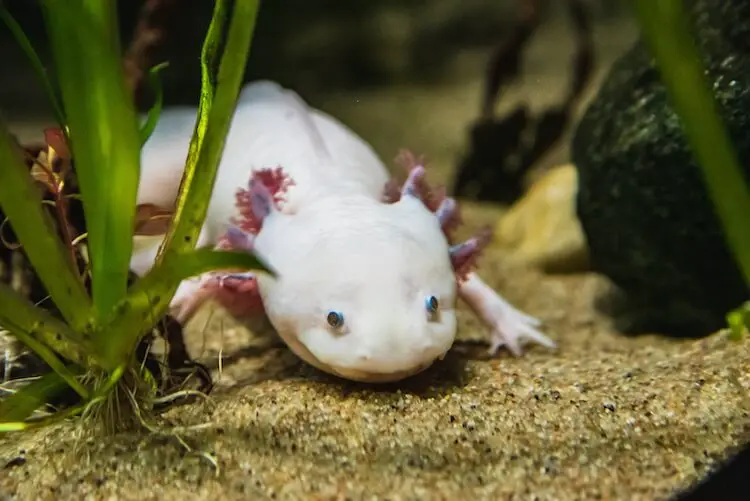
Axolotls are known as the Mexican walking fish.
They are native to a small region in eastern Mexico and are a type of Salamander. If you want a unique aquatic pet with a cute face then it might be exactly what you are looking for.
Axolotls live in aquariums and do best in cool or room-temperature water with low lighting. Provided each individual has 10-gallons of water they are peaceful in small groups.
Besides a good aquarium pump, you do not need any special equipment to care for axolotls. But, due to their sensitivity to water conditions, their tank needs regular maintenance and cycles.
Read on to learn more about their care requirements…
Overview and History
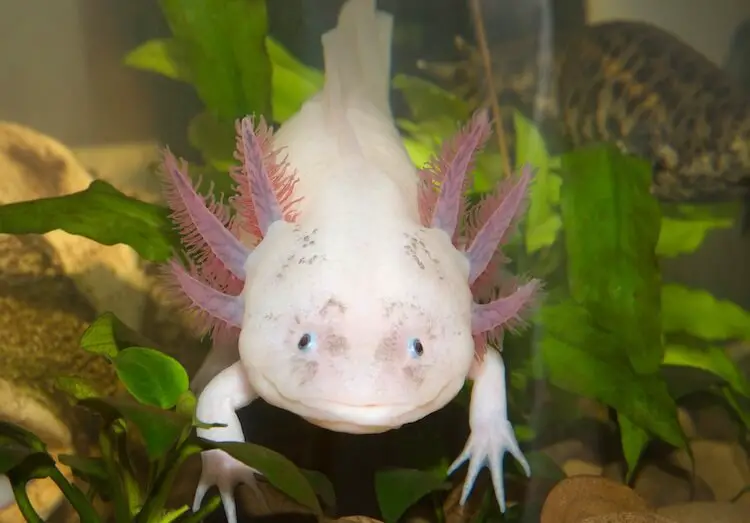
The fascinating history of the Axolotl (Ambystoma mexicanum) goes back thousands of years to the Aztec civilization in Mexico. These small amphibians were named after the god of death Xolotl who was said to have turned into an axolotl to escape being killed.
Axolotls were first introduced to Europe in 1863. A group of 34 were exported from Lake Xochimilco in Mexico to France as part of scientific studies on limb growth. They quickly spread across Europe as pets and most captive-bred axolotls sold worldwide have at least part of their ancestry from that first study group.
Many fish and amphibian enthusiasts keep axolotls as pets because of their interesting biology, cute faces and large size. But, axolotls can grow over one foot in length. They also live for 15 years. This makes them a significant investment in terms of both time and space.
Axolotls are generally not very active and prefer to rest on the bottom of their tank. This behavior gives them their nickname the “walking fish”. A single individual can be housed in a 15-gallon long fish tank provided there are at least six inches of water to swim in.
These salamanders are voracious carnivores. In the wild they will attempt to eat anything smaller than themselves. Because of this they should not be housed with other species of fish and amphibians. Axolotls will eat live prey such as earthworms, bloodworms and blackworms. Pet species are known to accept bits of beef heart, raw fish, frozen-thawed Mysis shrimp and brine shrimp.
With the correct care an axolotl will thrive for well over ten years. They will give any lucky keeper a fascinating insight into ancient Salamanders. They are truly one of the most unique pets.
Unfortunately this species is easily stressed so care must be taken with their husbandry. Handling, bright lights, warm temperatures, poor water quality and strong currents can stress this species.
Axolotl Care Sheet
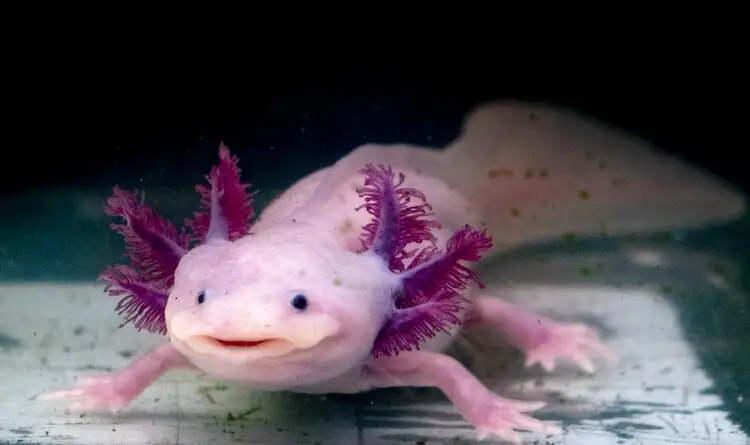
Axolotl care requires a good knowledge of aquarium maintenance, cycling and water parameters.
Those who are new to aquarium care and water cycling may find it challenging to keep an axolotl. People who have experience of keeping pet fish and nitrogen cycling should have no trouble keeping them healthy.
Tank Set Up and Requirements
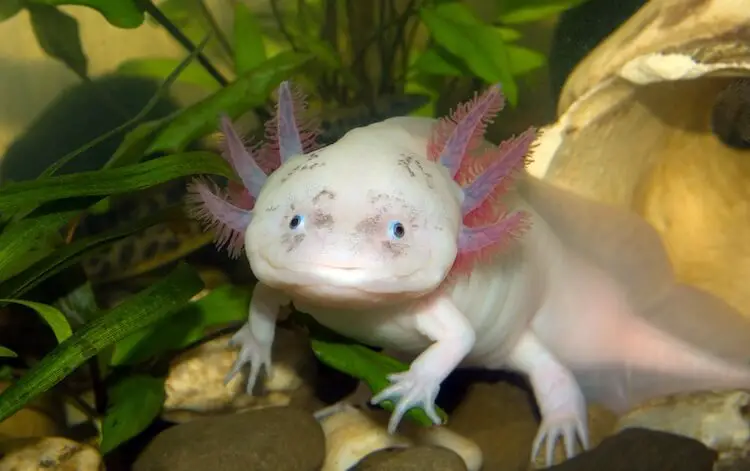
Axolotls were first discovered in several lakes in the highlands of central Mexico. These lakes are fed by water runoff from mountain streams. As a result their water must be kept cool and clear. This species is highly sensitive to ammonia, nitrates and nitrites.
A good aquarium pump with an output-reducing spray bar will help ensure pristine water and weekly 30% water changes are also important. A freshwater testing kit that checks water pH and parameters is one of the few pieces of equipment you will need.
Axolotls do not need any land in their enclosure, this is a common mistake.
One axolotl should live in a 15-gallons. If you add another Axolotl you should increase this tank size by 10-gallons for each individual added.
Tank floor space is more important than height so a 15-gallon long fish tank is better than a tall one.
Water temperature should remain between 60 to 65°F. Tanks should be kept in a cool room away from direct sunlight or air vents. If ambient temperatures are not cold enough a water-cooling system can be used to maintain the proper temperature range.
In addition to temperature, water parameters are vital for a healthy axolotl.
Aged tap water treated with an amphibian-safe water conditioner to remove chlorine and chloramines is the best choice. Axolotls prefer a pH between 6.5 and 8. Ammonia, nitrates and nitrite levels should all be 0.
The best substrate for the tank is fine sand. You can add some live plants, caves and terracotta pots to provide hides and enrichment. If you want to use lights for viewing growing plants, then provide plenty of hiding spaces and at least 12 hours of darkness for your salamanders. Axolotls do not need any special lighting and are sensitive to bright lights.
Axolotls do not like strong currents. You will need to install a spray bar outlet for the pump to diffuse the water pressure. Also, including an air stone is necessary to oxygenate the water.
Diet
Axolotls are carnivores, they eat aquatic insects, worms, small fish, larvae and other amphibians in the Mexican lakes of Xochimilco and Chalco. Axolotls hunt by opening their mouths quickly to generate suction. This suction pulls prey into their mouths.
Pet species are not picky eaters and can be fed a variety of foods:
- Bloodworms – if fed whole worms they do not need any extra supplements.
- Frozen Brine
- Live Nightcrawlers
- Mysis Shrimp
- Red Wigglers
- Small Bits of Raw, Lean Beef Heart
You can also find axolotl food pellets.
A full-grown adult will eat two to three medium-sized nightcrawlers or one teaspoon of bloodworms every couple of days. Shrimp or beef should not be a staple diet but can be given as treats once a week. Young and growing axolotls will eat four small worms every day. Their appetite will diminish as they become adults.
Each axolotl’s feeding schedule will be slightly different depending on the individual. Unlike toads that overeat, axolotls will stop eating once they are full. Increase or decrease the amount of food you are feeding your axolotl until it is full.
Always remove any uneaten food from the tank to avoid dirtying the water.
The movement of live prey will attract axolotls to strike. If feeding dead prey you will have to use use a long pair of tongs to wiggle the food enticingly.
Lifespan and Health
Axolotls are generally hardy pets that do not easily become ill. With clean water, cool temperatures and a healthy diet they can live for 15 years!
The main causes of sickness in Axolotls are poor water quality and chronic stress. You should check your water parameters regularly. Poor water quality can lead to secondary infections from parasites or bacteria.
Unhealthy Salamanders will move stiffly, have very pale gills and may become thin and unresponsive.
High temperatures or levels of ammonia, nitrites or nitrates can cause burns on your Axolotl’s skin. It can even lead to death if not corrected quickly. Proper tank maintenance and water cycling will prevent this from happening in the first place. You should continue to check your water parameters and setup every water cycle.
Bacterial infections are normally caused by overcrowding and/or dirty water.
Overcrowded axolotls may nip at each other’s gills. This can lead to open wounds that can quickly become infected. Red streaks, patches or small open sores are all signs of a bacterial infection. An infected axolotl should immediately be isolated in a “hospital tank” for treatment.
Axolotls can pick up internal and external parasites from their diet. Purchasing prey from a reputable source will help prevent this from happening.
You will also need to quarantine new axolotls for at least two weeks before adding them to a communal tank. During this time observe them for signs of parasites (e.g. red skin patches, refusal to eat).
Handling
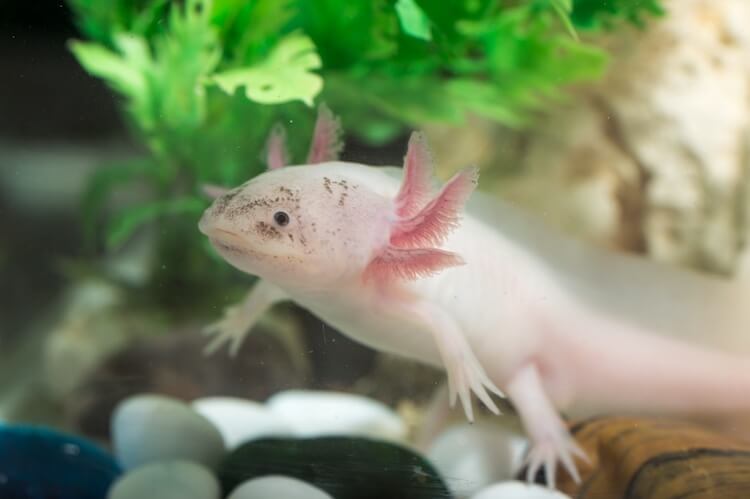
Axolotls should not be handled. In order to breath their gills must remain in water. They also have very delicate skin that is covered in a protective mucus layer. When handling you can accidentally rub off this layer which makes them vulnerable to skin infections.
Moving an axolotl is best done by using a soft aquarium net to catch and quickly transfer it to a separate container. If you are taking out your axolotl to transfer it to another place, make sure the water temperature and other parameters in the new tank is the same as in the original for their acclimation.
If you do not have an aquarium net then you can try herding or scooping it into a submerged container. You can then lift the container out of the tank. Be careful when herding Axolotls as they get stressed very quickly. If threatened they will flee to a hiding spot rather than attempt to fight.
Unlike other amphibians such as the Pixie Frog, this species has not evolved any defense mechanisms. This is because historically they had no predators.
Behavior
Axolotls are slow-moving and docile amphibians that are mostly active at night.
You will find your axolotl spends most of its time at the bottom of the tank. They will also move about during feeding time and may even carefully stalk their prey. However, on the whole axolotls are not very active and prefer to live a sedentary lifestyle.
If you have sand or plants in their tank, you may find them digging and rearranging their décor. This is an enriching behavior and entertaining to watch.
Comfortable and relaxed axolotls will remain out in the open, while shy or stressed individuals will remain hidden. Over time, some axolotls can even be trained to associate their owner with food and will swim to the front of the tank when you approach.
In the wild several individuals may live together in a congress of Salamanders, though they are not social and are normally found on their own. During breeding season (from March to June) males and females will seek each other out to mate. Otherwise, they generally do not interact with each other.
Young axolotls will often nip at each other and adults may even eat small juveniles if housed together.
Keeping similar sized individuals, and providing plenty of room and hiding spaces, is key to decrease aggression and stress from overcrowding. Each Salamander needs a minimum of 10-gallons of space each.
Appearance, Colors and Morphs
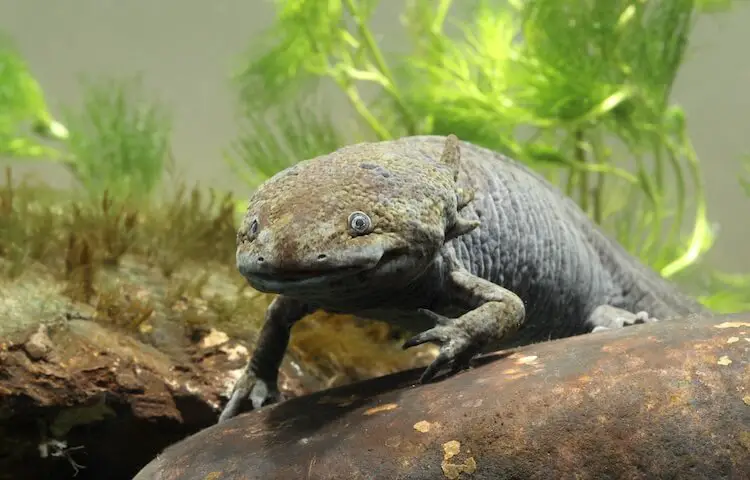
Axolotls are neotenic salamanders. This means adults have characteristics that are only found in babies of other species. A good example of this is their gills. Most amphibians lose their gills as they age from a larva into an adult (i.e. metamorphize). However, fully grown adult Axolotls keep three pairs of gill stalks behind their head that hold filaments used for breathing.
Along with their gills the most recognizable traits of axolotls are their:
- Cylinder-shaped bodies.
- Small eyes.
- Large tails – usually as long as the head and body combined.
Wild Axolotls are a speckled combination of brown, green, and gold. They have dark purple gill filaments, black pupils and golden irises.
There is now a large variety of axolotl color morphs in addition to wild species. Because of captive breeding there are a total of five known morph species that are ranked below in popularity order:
- Leucistic – pure white with dark eyes and red gills. Some individuals may develop speckles as adults.
- Albino – albino axolotls are pure white. However, unlike the leucistic morph, they have light pink or white eyes and pink gills.
- Melanoid – much darker than wild types. They have dark red or black gills and do not have golden irises or skin flecks.
- Green Fluorescent Protein Transgenic – appears normal under regular lighting, but glow a bright green under blacklights.
- Golden Albino – golden yellow with pink gills and yellow eyes. They also have shiny yellow flecks on their skin that make them look metallic.
Size and Weight
Axolotls can range in length from 6 to 18 inches but are normally between seven to nine inches long. Adults weigh between 5 to 12 ounces.
It is normal for females to be slightly heavier than males, but they are not usually longer. Males have a large vent and deep vertical grooves along the sides of their bodies that can also help distinguish them.
Axolotls are fairly slow growing and gain the most body mass during their first two years. However, they continue to grow for their entire lives just at a much slower growth rate.
What To Know Before Buying
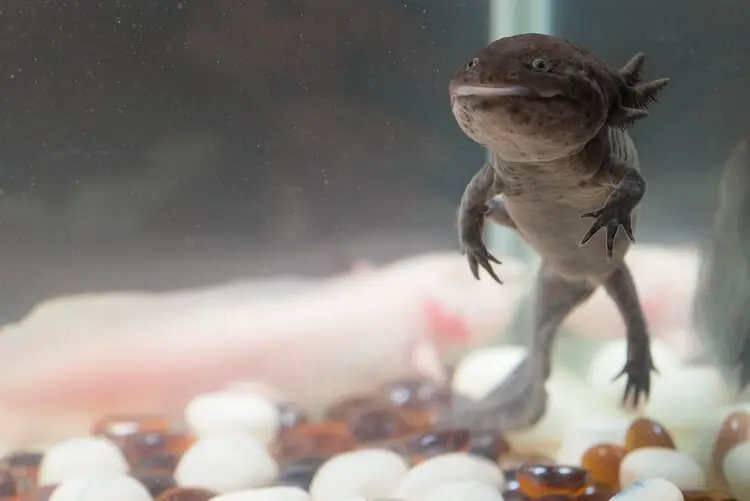
Axolotls are normally sold as juveniles or young adults (i.e. between 2.5 to 4 inches long). It is common to find them for sale at pet and aquarium stores, reptile expos and online. A healthy axolotl will have full, feathery gills, skin without any lesions or red patches and will startle when touched gently.
Before purchasing an axolotl you should make sure they are legal to own and/or import in your state.
California, New Jersey, Maine and Virginia have laws banning the ownership of axolotls. New Mexico bans any importation of this species. These laws are in place to avoid wild species being captured due to the axolotl’s status as critically endangered.
Over the past 50 years the introduction of large invasive fish into their native lakes have caused their populations to decrease to near extinction in the wild. Increased human footfall and habitat destruction in Mexico City has also decimated wild axolotls. Luckily pet species are bred widely and adapt well to living in aquariums.
How Much Does An Axolotl Cost?
Typically an Axolotl will sell for between $30 to $80. This price range depends on the morph and age:
| Species | Price ($) |
|---|---|
| Wild type | 25 to 40 |
| Leucistic | 35 to 45 |
| Albino | 25 to 50 |
| Melanoid | 50 to 70 |
| Green Fluorescent Protein | 45 to 80 |
| Golden albino | 50 to 75 |
In addition to the ownership cost, you will also need a 15-gallon tank with a pump and light. This can cost anywhere from $50 to $150 based on the brand, quality and style. Décor and live plants may cost another $25 to $50
Wrapping Up
| Axolotl Facts | |
|---|---|
| Common Name (s) | Axolotl, Mexican Salamander, Mexican Walking Fish |
| Scientific Name | Ambystoma mexicanum |
| Family Name | Ambistomatidae |
| Genus Name | Ambystoma |
| Range | Lake Xochimilco and Lake Chalco in Mexico |
| Adult Size | 6 to 18 inches in length 5 to 12 ounces |
| Lifespan | 10 to 15 years |
| Similar Species/Popular Alternatives | Tiger Salamander, Fire-Bellied Toad |
Axolotls are a one-of-a-kind amphibian. Their adorable face, unusual habitat and large size make them popular with both fish and amphibian keepers.
They are not demanding in terms of regular husbandry and care.
A good knowledge of aquarium cycling and water quality will make keeping this species much easier. Setting up and maintaining an aquarium can be difficult for first time owners.
They are not suitable for children or adults looking for a pet to hold. They tend to spend most of their time sitting on the bottom of the tank and stress very easily.
If you are looking for an amphibian, unlike any other pet and is fun to watch, then the axolotl is perfect for you.

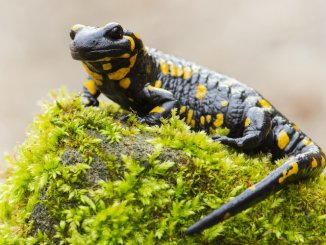
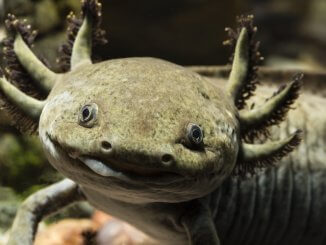

Will an Axolotl grow its feathers on its gills ?
This is a terrific article for me, a fish keeper considering an axolotl
Thanks
I’m trying to get my parents to get me an axolotl,and this gave me so much information!
Same!
Mee tooooo
My friend really wants an Axolotl, but I think their banned where she lives. I did some research and I think she needs to get a permit to own one. I am going to share this article with her so she can see if she could start the process of getting that permit.
(strongly suggesting an edit) Axolotls are not supposed to eat beef, I mean they cant exactly suck up an entire cow can they?
It is not a natural food source, nor something that should be given regularly, but they seem to really enjoy beef and have no issues digesting it. But of course, a religiously committed Axolot owner might choose to avoid this food item, as they are likely to never encounter it in the wild.